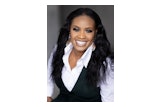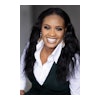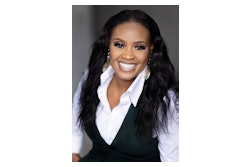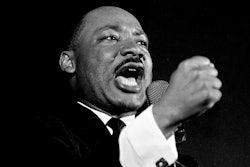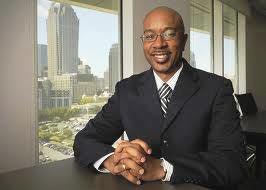 Dr. Chance Lewis of the University of North Carolina at Charlotte says the pipeline of Black educators is in place, and there is no real excuse for underrepresentation in classrooms.
Dr. Chance Lewis of the University of North Carolina at Charlotte says the pipeline of Black educators is in place, and there is no real excuse for underrepresentation in classrooms.When a group of education researchers, practitioners and activists gathered at Howard University in April to address the lack of diversity in the nation’s teacher workforce, Dr. Leslie T. Fenwick reminded her audience that such a time had already been foreshadowed.
Nearly 60 years ago, Thurgood Marshall first “warned that Black teachers would lose their jobs to racist displacement as the nation’s schools were integrated,” said Fenwick, dean of the Howard University School of Education. Marshall, in 1955, was serving at the NAACP Legal Defense Fund when he reported on the impending plight of these teachers. The year before, Marshall had argued and won the landmark desegregation case of Brown v. Board of Education that opened up classrooms and education to Black children.
The elimination of Black teachers from the classroom would not only be an economic loss for those educators, but a disservice to their students and a detriment for the teaching profession, says Fenwick, further sharing Marshall’s troubling words during a town hall event hosted by Howard’s School of Education, the Congressional Black Caucus Foundation and the American Federation of Teachers.
Today, Marshall’s sobering observations have proved true, say experts pointing to the academic and social benefits that come when African-American and Hispanic students attend schools where racial and gender diversity of teachers and staff is high. But that doesn’t reflect the makeup of most urban public schools when “73 percent of teachers are White and 68 percent of principals are White,” Fenwick adds.
Black and other minority children are being taught in deeply racially isolated schools and are more likely to spend their entire K-12 education in public schools without ever seeing or having a teacher of color. In fact, Fenwick says, “This is the most populous generation of African-American children who have never been taught by an African-American teacher or who have never attended a school led by an African-American principal.”
But Amy Wilkins, the College Board’s new civil rights fellow, pointed out at a town hall forum on teacher diversity that “we have our own mess to clean up” as Black educators.
“Some of the most hurtful things that have been said about Black children have come out of the mouths of Black teachers,” says Wilkins to applause. Just because a Black teacher is in the classroom for Black children, Wilkins adds, there is no guarantee that a positive learning experience is taking place or a role model is there.
What’s needed, says Wilkins, the former Education Trust executive, “are teachers who respect our children and who can be ruthlessly demanding” when it comes to expecting the best academically from Black and minority children, as they do from White students.
And as practitioners and schools of education, urged AFT President Randi Weingarten, “We need to do more to ensure teachers better represent the students they teach. This includes thinking differently about recruitment and retention and about how we as a country view teaching.”
HBCUs, which produce 50 percent of the nation’s Black educators, have been doing just that, says Dr. Chance Lewis, who “is tired of the familiar refrain, ‘We can’t find any good Black teacher recruits.’”
They are out there, and the process begins on college campuses, maintains Lewis, the Carol Grotnes Belk Distinguished Full Professor of Urban Education in the College of Education at the University of North Carolina at
Charlotte.
When Dr. Ivory Toldson surveys the education workforce, he finds that “teaching is the No. 1 profession among Black men with master’s degrees,” but there are less than 2 percent of them in the classroom. Improving their college-going and completion rates makes boosting the professional teaching pipeline that much more complicated, but it can be done, says Toldson, a Howard University professor and senior research fellow with the Congressional Black Caucus. The expected retirement of more than 1 million teachers in the coming years offers a great opportunity for racial and gender diversity in the profession, experts say.
For Black male teachers, though, their journey shouldn’t end in the classroom, Toldson suggests. They have too much to offer.
“It would be a disservice to the profession if they aren’t also used to improve diversity,” or tapped to help educate those concerned about best practices for teaching young Black males, or if they aren’t allowed to provide other quality services that can benefit all students regardless of race or gender.
